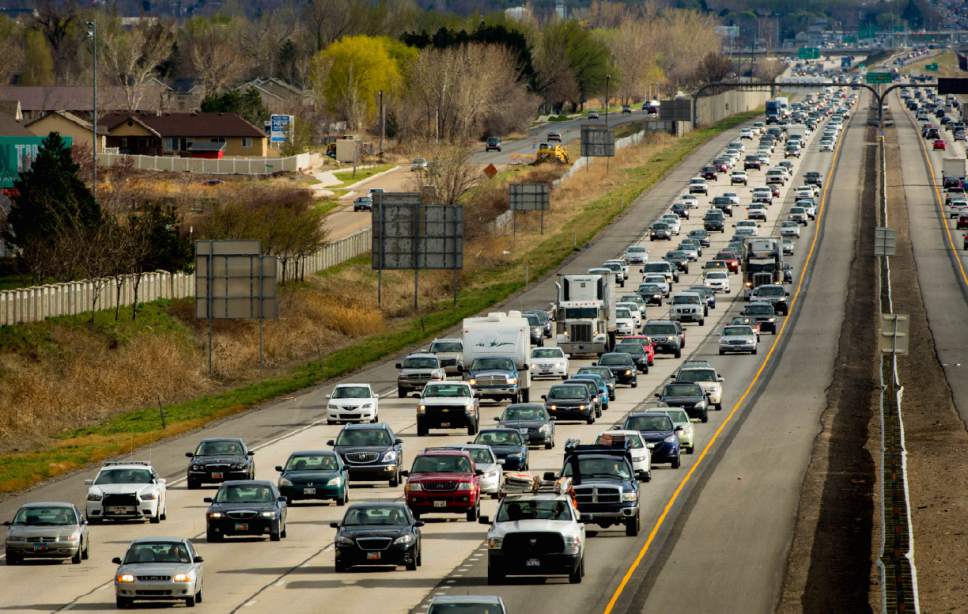This is an archived article that was published on sltrib.com in 2016, and information in the article may be outdated. It is provided only for personal research purposes and may not be reprinted.
As the Wasatch Front's first snowstorm of the season is forecast for Thursday, officials are urging drivers to do something that is a bit counter-intuitive: move off freeways if they are involved in fender benders.
Even pulling onto shoulders instead leads to long backups, and often causes secondary crashes — especially in snowy and icy weather. And leaving cars to check damage or talk to other drivers leads to people being hit by other cars.
"If you have the ability to get yourself off the freeway, do so," Michael Rapich, superintendent of the Utah Highway Patrol, said Tuesday.
"As long as it is a property-damage crash and there is not an injury involved, you can legally move your vehicle to a safe location. And the safest location on the freeway, especially during a snowstorm, is off the freeway," Rapich said.
"If you call a dispatcher, the first thing they are going to ask you is, 'Can you move your vehicle?' If you can, they are going to give you directions where to go," he said. "It will be the nearest offramp, and we have predetermined locations at each of those offramps where a trooper will meet you and get you out of harm's way."
Rapich notes that a normal first reaction is to leave a vehicle to look at damage or talk to the other driver.
"Bad idea," he said for a busy freeway. "Stay in your vehicle. If your vehicle still will move, move it off the freeway."
Utah Department of Transportation spokesman John Gleason added, "You're basically a sitting duck if you get out of your vehicle. Stay safe, buckled up in your car and call 911 for help."
Rapich said if absolutely needed, have a quick communication with the other driver to let him or her know you are moving. "If you both have to move off separately, call 911 and let the dispatcher know where you are and we will find you."
He adds, "A lot of times when two vehicles have been involved in a crash, they end up on opposite sides of the road. Get yourself to safety. We'll take care of locating the other vehicle."
UDOT said its studies show that in crashes on a six-lane freeway where vehicles pull onto a shoulder, traffic will still back up as if two lanes were blocked. If a crash remains in a lane, congestion would be the same as if three lanes were blocked.
"It's amazing the amount of backup we see from even those most minor crashes," Gleason said. "Many of us are under the impression that if we pull onto the shoulder, that we're out of harm's way and we aren't blocking traffic. That couldn't be further from the truth."
He added that, especially in winter, "If weather is the cause of your crash, there's a good likelihood that a secondary crash will be caused as well. Maybe another car will hit the same icy patch. So don't get out of the car…. Unfortunately, we've seen too many people pay a high price for that."
In advance of the season's first snowstorm, Rapich also urged drivers to ensure their cars are ready for winter and "to slow down and leave earlier" when bad weather arrives.



